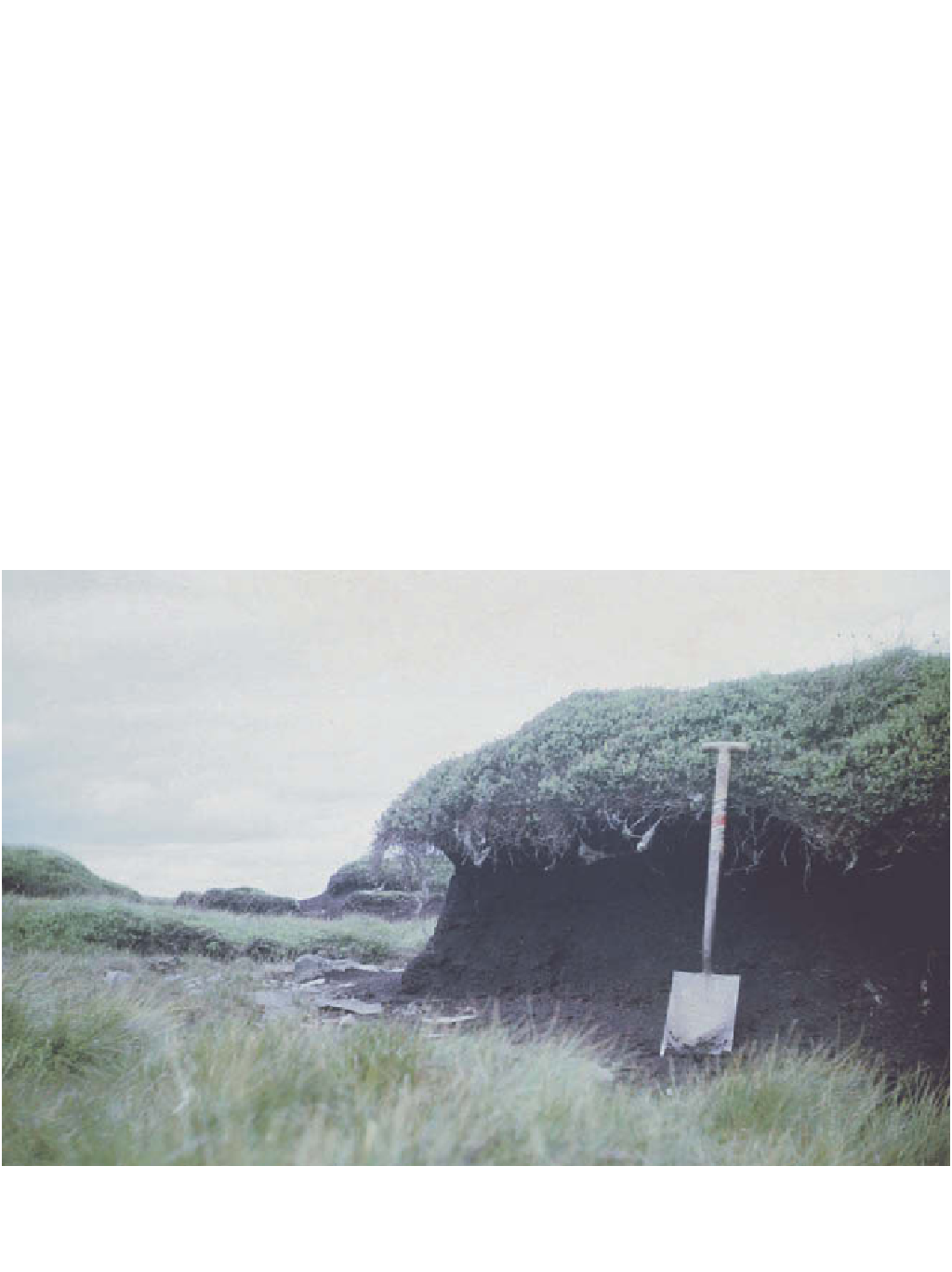Geoscience Reference
In-Depth Information
moss peats, and highlights that the chief nutrient input
for plants growing in these sterile soils is the precipitation
Lowland peat soils are strictly 'earthy peat soils' as they
have an earthy topsoil or mineral topsoil overlying organic
material. Their main areas are in the Fens, around the
Wash, the Lancashire 'mosslands' and the Somerset moors.
Chemically they range from calcareous to extremely acid,
whilst locally some of the fen peats in former estuaries
have developed a sulphuric horizon. The organic soils start
as reedswamp, fen and carr, collectively known as basin
peat. Initially the peat formation starts as the Low Moor
stage, under the influence of ground water, whose nutrient
status and pH will determine the kind of peat formed.
Further upward growth above the groundwater table
depends only on precipitation for nutrient inputs. This is
the Raised Moss stage, giving a distinct convex surface
(
Fig. 18.13
).
Large areas of lowland peat have been reclaimed and
now form the best arable land in the United Kingdom.
Raised mosses can be drained by gravity drainage systems,
but low-moor peat usually needs a pumping scheme.
Drainage is necessary for agriculture, but this leads to
wastage of the peat due to water removal, compression
and decomposition. Wind erosion of dry loose surfaces
can also occur, especially in spring. The famous Holme
Post at Holme Fen, Cambridgeshire, showed a rate of
peat wastage of 18 cm per annum when initially drained
1850-60 (Hutchinson 1980).
Saline and alkali soils
Under arid and semi-arid conditions, leaching of the soil
profile is very weak. In normal desert soils it is still
sufficient to remove soluble salts, though the less soluble
gypsum (CaSO
4
.2H
2
O) and lime (CaCO
3
) accumulate as
distinct layers (By and Bk horizons). If, however, there is
a higher input of soluble salts into the soil, leaching may
not be sufficiently powerful to remove them and they
accumulate, usually as a salt-enriched surface (Az horizon)
or salt crust (
Plate 18.18
).
The enrichment of salts is
common wherever ground water comes close to the soil
Plate 18.17
Eroding blanket peat 'hagg' in the English Pennines. These 'Rofobard'-type features are caused by wind erosion
,
water erosion at the surface and through pipes, slumping, needle-ice formation and animal hoof impact.
Photo: Ken Atkinson









































